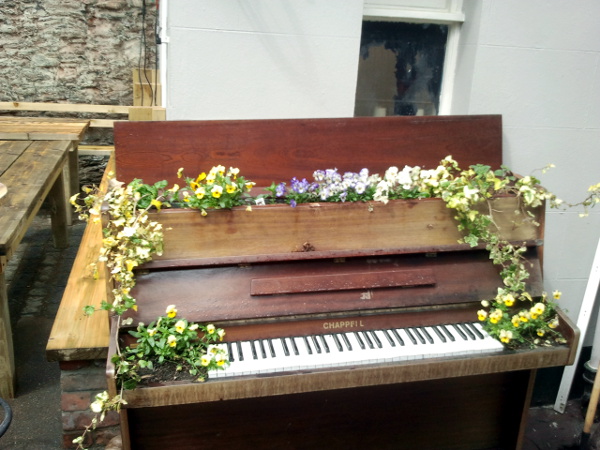Rainbow Worrier
In Bristol’s Barton Hill district, there’s a lovely little pub affectionately known as the Little Russell (its real name is the Russell Arms; the ‘Big’ Russell used to be nearby on Church Road, Lawrence Hill, but has long since closed. Ed.).
It’s a friendly place and is little changed from when it first opened in the 19th century.
One change in recent years, however, is the addition of a fine mural by local artist Andie that covers 2 walls of the yard, which has since the smoking ban become the pub’s smoking area. Part of the mural is shown below.

The train in the shot is known as Rainbow Worrier because it’s green and has a shady-looking character in a hoodie in the cab. Note the machine gun and the fish-shaped bombs; they’re more reason to worry.
Andie is definitely a man with a sense of humour and I love his punning references; note ‘Royal Male’ on the next locomotive.
Rainbow Worrier itself reminds me of reading about the armoured trains that used to chug up and down the Russian railway network around the time of the Russian revolution. For instance, the Czechoslovak Legion used heavily armed and armoured trains to control large lengths of the Trans-Siberian Railway (and of Russia itself) during the Russian Civil War. One of the Czechoslovak Legion’s armoured trains is shown below.

I wonder if these trains or the later ones used in World War 2 were what inspired Andie; or was he just having fun?






 Today for breakfast I indulged in some sausages; not just any sausages, but Sainbury’s Outdoor Bred Pork Sausages. They were delicious and disappeared off the plate in double-quick time.
Today for breakfast I indulged in some sausages; not just any sausages, but Sainbury’s Outdoor Bred Pork Sausages. They were delicious and disappeared off the plate in double-quick time.
